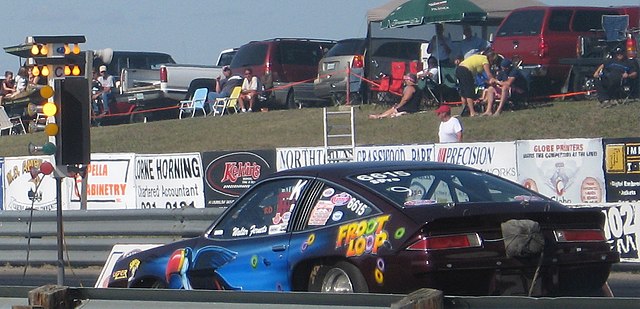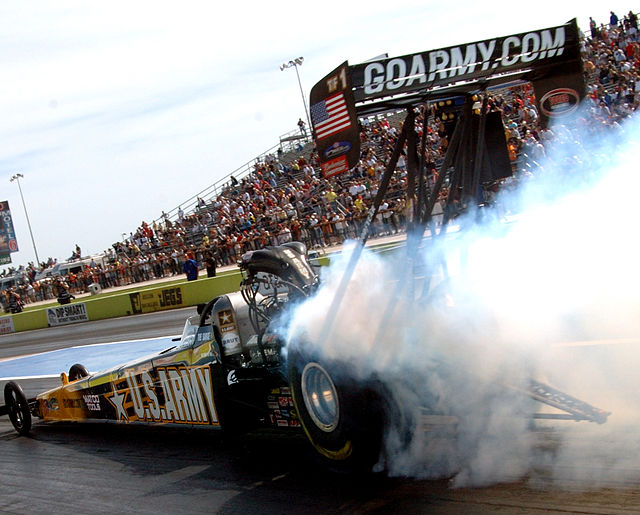A dragstrip is a facility for conducting automobile and motorcycle acceleration events such as drag racing. Although a quarter mile is the best known measure for a drag track, many tracks are eighth mile (201 m) tracks, and the premiere classes will run 1,000 foot (304.8 m) races. The race is begun from a standing start which allows three factors to affect the outcome of the race: reaction time, power/weight ratio, and traction.
The Hockenheimring dragstrip, 2005
Looking down a drag strip. Note the Christmas tree countdown lights in the center
Drag racing vehicles ready to race
Bring your own cars waiting to run down the dragstrip
Drag racing is a type of motor racing in which automobiles or motorcycles compete, usually two at a time, to be first to cross a set finish line. The race follows a short, straight course from a standing start over a measured distance, most commonly 1⁄4 mi, with a shorter, 1,000 ft distance becoming increasingly popular, as it has become the standard for Top Fuel dragsters and Funny Cars, where some major bracket races and other sanctioning bodies have adopted it as the standard. The 1⁄8 mi is also popular in some circles. Electronic timing and speed sensing systems have been used to record race results since the 1960s.
The Christmas tree counting down at Saskatchewan International Raceway, outside Saskatoon, Saskatchewan. Note the blinder, to prevent the driver from being distracted by the lights for the other lane.
Top Fuel drag race between Don Prudhomme and Kenny Bernstein in 1991 in which Prudhomme's dragster caught fire
Drag racing is a sport in which vehicles compete to see which can travel a specific distance the fastest from a standing start. To achieve high acceleration, drag racers have large tires, and the tires often "burn rubber" by friction with the pavement when starting. Tony Schumacher in 2006 race.
A drag race wheelie








